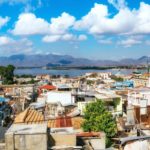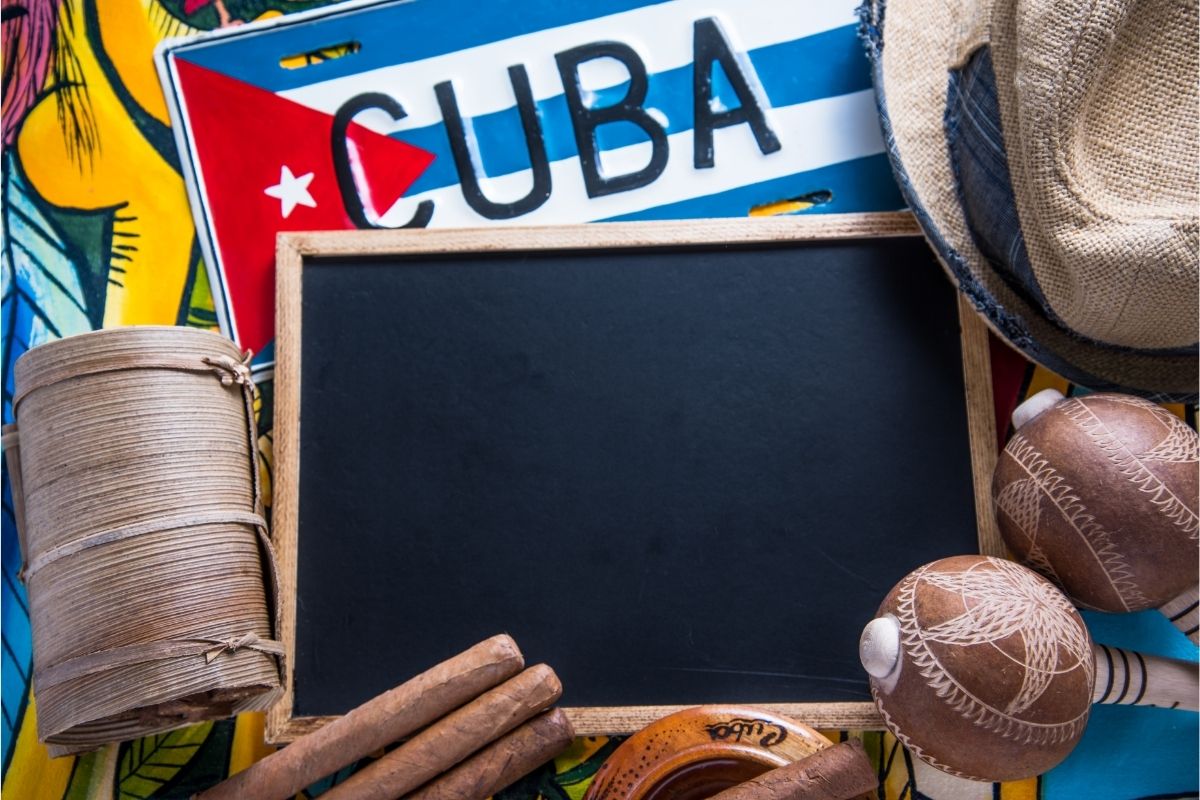Baseball in Cuba is much more than just a sport – it’s a national pastime and a cultural cornerstone. From the cradle to the grave, Cubans live and breathe “beisbol.”
In this blog post, we’ll tell you all you need to know about baseball in Cuba, including its popularity and what to expect when attending a game.

The Popularity of Baseball in Cuba
Baseball arrived in Cuba in the late 19th century, and it quickly captured the heart of the nation. The sport’s popularity exploded in the early 20th century and has held its status as Cuba’s number-one sport ever since. Football, or soccer, as known in North America, while growing in popularity, is yet to rival baseball’s standing.
How many people watch baseball in Cuba?
An exact number is challenging to pin down due to limited data availability, but by observing daily life in Cuba, it becomes apparent that a significant proportion of the population follows the sport religiously. Whether in homes, local bars, or public parks, Cubans can often be found engrossed in the latest game, discussing recent results, or debating their favorite players. Radio broadcasts and newspaper reports also ensure that those without access to television don’t miss out on the action.
Watching Habits
Cubans’ passion for baseball isn’t confined to professional games alone. Amateur matches draw large crowds, with spectators often spilling over from the small stadiums onto nearby hillsides or rooftops. Likewise, street baseball games are a common sight, especially among young Cubans, who can turn any open space into a makeshift diamond.
Television broadcasts of the Cuban National Series, the premier baseball league in Cuba, are must-see events. The series consists of 16 teams, each representing a province of Cuba, and runs from late fall to spring. Tens of thousands of fans across the country tune in for each game, and during the playoffs, the number can rise significantly.
In the absence of real-time internet access, Cubans have developed unique ways to stay updated with their favorite sport. “El Paquete Semanal” (The Weekly Package), a 1 terabyte collection of digital content distributed via USB drives, often includes recent MLB games and highlights, enabling baseball aficionados to follow their favorite Cuban players who have made it to the major leagues.
Famous Cuban Baseball Players
Here are some of the most famous Cuban baseball players, who have made significant impacts both in Cuba and Major League Baseball:
- Minnie Miñoso – Born in Havana, Miñoso was one of the first black players in Major League Baseball and the first black Cuban in the league. He was a 9-time All-Star during his career, which spanned from the 1950s to the early 1980s.
- Luis Tiant – Tiant, known for his unorthodox delivery, had an illustrious career in the Major Leagues, especially with the Boston Red Sox. He had over 200 career wins and was a 3-time All-Star.
- Tony Oliva – Born in Pinar del Rio, Oliva had a distinguished career with the Minnesota Twins in the 1960s and 1970s. He was an 8-time All-Star and won three batting titles.
- Yasiel Puig – Born in Cienfuegos, Puig defected to Mexico in 2012 and then signed with the Los Angeles Dodgers. He won the NL Rookie of the Year award in 2013 and has been an electrifying presence in the league.
- Aroldis Chapman – Known for his record-breaking fastball, Chapman, from Holguin, has had a successful career in the Major Leagues, starring for teams such as the Cincinnati Reds and New York Yankees. He’s a multiple-time All-Star and won the World Series with the Cubs in 2016.
- José Abreu – Born in Cienfuegos, Abreu has been a dominant hitter since arriving in the Major Leagues in 2014. He won the AL Rookie of the Year award that year and has since been a consistent All-Star for the Chicago White Sox.
Playing Baseball in Cuba
In Cuba, children often learn to play baseball before they even start school. Community parks across the country host pickup games almost every day, fostering a grassroots baseball culture that has produced numerous international stars.
The country’s baseball infrastructure is extensive, with training schools, amateur leagues, and professional clubs providing a pathway for talented players to climb. The government-funded sports system plays a significant role in identifying and nurturing young talent. However, facilities are often rundown due to the country’s economic hardships, and equipment is in short supply.
Despite these challenges, the love for the sport and the dream of representing the nation or making it to the Major Leagues fuel young players’ determination. Many of baseball’s biggest stars, like Yasiel Puig and Aroldis Chapman, honed their skills on Cuba’s dusty diamonds.

Attending a Game in Cuba
Going to a baseball game in Cuba is an experience like no other. The atmosphere is electric, with passionate fans creating a cacophony of sound that reverberates through the often-packed stadiums. Fans wave flags, blow horns, and drum on anything they can find. Spontaneous salsa dances break out in the stands, adding a uniquely Cuban flavor to the experience.
Unlike many professional sports events around the world, baseball games in Cuba are remarkably affordable. This accessibility has helped maintain baseball’s popularity among all sections of society, with fans from all walks of life coming together to cheer on their local team.
While the game is undoubtedly the main event, the spectacle extends beyond the field. Vendors meander through the stands, selling everything from Cuban sandwiches to tropical fruit, and from coffee to cold beer. The aroma of Cuban cuisine wafts through the air, blending with the scent of freshly cut grass and the earthy odor of the infield.
Cuban Baseball Stadiums
- Estadio Latinoamericano, Havana – Known as the “Colossus of Cerro,” Estadio Latinoamericano is the largest stadium in Cuba with a seating capacity of 55,000. It is home to the Industriales, the most successful team in the Cuban National Series. Tourists visiting this iconic stadium can experience a fantastic atmosphere, especially during a game against a rival team. You’ll need to buy tickets on the day of the game, usually a couple of hours before the start.
- Estadio Augusto Cesar Sandino, Santa Clara – Home to the Villa Clara team, this stadium has a capacity of around 20,000. It’s smaller than some of the larger venues, but it offers an intimate atmosphere that allows visitors to get closer to the action.
- Estadio Capitan San Luis, Pinar del Rio – This is the home ground of Pinar del Rio’s team and has a seating capacity of 10,000. With a lively crowd and a close proximity to Havana, it’s a great destination for baseball fans visiting Cuba.
- Estadio Guillermón Moncada, Santiago de Cuba – This stadium is located in the second-largest city in Cuba and is home to the Santiago de Cuba team. It has a capacity of 25,000 and is famous for its passionate fans.
Baseball in Cuban Culture and Society
Baseball’s influence in Cuba transcends the confines of the field, shaping the country’s culture and society in various ways. It’s a common language that unites Cubans and sparks conversations among strangers. The sport has also served as a source of national pride, particularly when the Cuban national team performs well in international competitions.
Baseball players in Cuba are more than just athletes; they’re national heroes. Whether it’s local legends from the National Series or MLB stars, their stories of success provide inspiration for the next generation of players.
The passion for baseball in Cuba
Baseball in Cuba is a passion that permeates every aspect of life. It’s a sport that brings communities together, creates national icons, and offers a source of pride and joy for its people. In a nation where resources are scarce, and hardships are many, baseball stands as a beacon of hope and a symbol of the resilient Cuban spirit. Whether you’re a fan of the sport or simply curious about Cuban culture, experiencing the vibrancy of Cuban baseball is a must-do.
- The Art of Cuban Poster Design: History, Techniques, and Cultural Significance - May 23, 2023
- Taking A Vintage Car Tour In Havana - May 23, 2023
- Top 5 Cuban Revolutionary Sites - May 23, 2023








